Hi! this is a lil blog i made to post about my homebrew world, im gonna reblog or make everything that inspires me to keep it going! im planning to have it full of stories!
Don't wanna be here? Send us removal request.
Text
Villains - Archfey - Worldbuilding Wednesday
The villain is my favorite part of ANY campaign. So here I am gonna talk about how you can make different kinds of villains, honing down on a specific type and offering various ways to make them interesting. As always, we will be looking at real world history, culture, and mythology to make your villains seem realistic and specifically dastardly. For our first entry let’s discuss…
~~~~~~~~~~~~Archfey Villains~~~~~~~~~~~~

Why archfey? Two reasons: 1) I like archfey, they’re fuckin’ dicks. 2) Someone who’s name I can’t find asked me to make this and I am more than happy to make things for my followers.
NOW, let’s understand what an archfey really is.
An archfey is a creature of fey ancestry that is excessively powerful, nearing the power of a deity. Usually, such creatures are native to the Feywild. Within this realm, they command great power and can even shape the realm itself to their whim and whimsy.
Common Misconception
Archfey doesn’t mean “superelf.” An archfey can be a pixie, a dryad, a ghost, a beast of some kind, anything that is classified as “fae” or “fae-like” can be turned into an archfey. Elf-like archfey are the most COMMON, but absolutely not the ONLY form of an archfey.
The other misconception is that the archfey are good. This is because the Feywild is mistaken as a plain of good, while Shadowfell is a plain of evil. This is wrong. Feywild and Shadowfell aren’t images of good and evil. Their are images of abundance vs lack of emotion. Shadowfell is a plain of the depressed, the emotionless, the broken. Feywild is a plain of the bipolar, the expressive, the artists and the madmen.
(I’m getting tired of saying “archfey”)

Characteristics of the Archfey
So to understand how we get an Archfey villain, lets discuss some general characteristics of the archfey.
Background.

The archfey come from the Feywild. This is a place governed by emotion. When its denizens feel something strongly, they can physically change their environment. A cruel witch will transform the forest around her to grow trees that bleed and produce fruits shaped like heads. While a kind princess will transform the fields around her into a gorgeous plain of crystalline flowers.
Now, the archfey can transform the Feywild at a moment’s notice. Which means they can do one or both of these things:
They can control their emotions very well.
They only ever have emotional extremes powerful enough to instantly alter the Feywild.
Lifestyle

The archfey live careless lives. They are too powerful to have any natural predators, as such live carefree and happy. Due to their extended life (they live like thousands of years), they are NEVER in rush. Why should they be? They’ve got time, ALL the time.
Environment

Based on HOW the Feywild is, how it is ever-shifting and changing, its denizens must learn to control this change to be able to thrive. Since we are working with an archfey, we can assume they’ve already thrived to the top of their food chain. As such, they must have learned to command the Feywild OR adapted to this changing world, having very drastic changes in personality, behavior, or even looks.
With all this information, let’s share some ideas for archfey villains.
Examples of Archfey Villains
Example #1: The Many Faced Man. Simply put, a doppelganger. The archfey are ever-changing. For this example, our villain always changes their looks. So your Party pisses off this archfey or in some way becomes enemies with him. So when your spends the night camping outside, whoever is keeping watch suddenly poof, is teleported away (because this is an Archfey, it can do this kind of shiz) and in steps a the Many Faced Man who takes this lost PCs form.
I urge you, IRL, pull the Player of this character aside and tell them your plan. Tell them that you want to replace them with a Doppelganger, but not to worry, because their PC will eventually be rescued. THEN, offer them to role play as a doppelganger pretending to be their character. Most players will have TONS of fun with this idea. If you player doesn’t want to RP a doppelganger offer them to role a new temporary PC or just dump the idea.

Example #2: Prince of Liars. A very powerful archfey this one is. He has immense power in the Feywild, and has managed to TRAP the Party in his domain. I’m stealing from Curse of Strahd here, but essentially rework that campaign with more fey-like themes. Instead of vampires, we got fey, instead of Strahd we got a spoiled brat of a prince who is all-powerful but only wants to mess with the Party before killing them in a cruel manner for his or her amusement.
For additional complexity, you can make the Prince of Liars have very drastic shifts of emotion. Think, the bad guy from Split (the movie). One moment he is nice to the Party and leads them to a place filled with treasure, the next he snaps into sheer brutal cruelty and slaughters the ranger’s companion. This will put the Party on edge when dealing with the guy. Furthermore, knowing that the archfey is powerful enough to destroy them with ease puts the Party on the edge, at least until they find something that can kill or neutralize this big bad.

Example #3: The Undying Court. This is for LARGE scale campaigns. Let’s say you have a game that is heavy on politics, but spans different dimensions. So the PCs are working with the politics between Mount Celestia and the 9 Hells and the Abyss, etc. That’s when you throw in the Undying Court. A hive-mind of several Archfey that operate as a singular entity and wish to expand their chaotic influence across the many plains. They may ally with Demon Lords and expedite chaotic situations to gain more power, so your PCs would have to negotiate a turbulent field of politics.

And that’s that folks. I hope this provides SOME use to y’all and helps you out with future ideas. Of course you don’t HAVE to follow my guideline 100%. You don’t need to follow it at all, in fact. Just take it as it is, my ideas for a good fey villain. What about you folks? Would you like to see breakdowns of other kinds of villains? I’d love to do more. Send your recommendations my way or share your ideas for villains. I’d love to hear it. Good luck everyone.
The Unfair DM
7K notes
·
View notes
Text
Worldbuilding: Religions

Religions have many different aspects that should at least be given thought if not careful consideration. Use these to guide your creative process when developing new religions and deities.
Key Aspects
Deity/Pantheon: Your religion does not need to necessarily have a deity, and it can even have an entire pantheon. I would venture that while a trained priest might perhaps specialize in one deity, a religion can have many.
Dogma: What are the principles and teachings of your religion? What does the deity implore of their worshippers? What is and isn’t allowed? What are the ethics of the religion? Why must we follow these principles?
Symbols: As important as the religion’s dogma are its symbols. How is your religion recognized on flags, tabards, armor, weapons, artwork, and holy symbols? Does your religion have a holy color or color scheme that they could use for their priestly robes?
Temples: Where are the religion’s places of worship? They could be secluded and secret or in/near cities. What do they look like? Are they merely household shrines or grand cathedrals? Do they have any distinguishing features?
Religious Practices
Rites and Rituals: What sorts of special ceremonies do the clerics of your religion practice? Are there any special material components that have meaning for the religion, deity, and ceremony? How long do ceremonies take and what is supposed to come from them? Rituals always serve a purpose, even if that purpose is merely affirming your faith. Rituals are useful as story elements as well as for players to perform.
Affirming Faith: telling your god you’re there and in prayer. It can be as simple as a daily prayer or weekly ceremony or more in-depth like a monthly or yearly ritual.
Proving Devotion: proving your faith to your god, usually meant for those who might be in doubt or who have wavered.
Initiation: rituals for new members to the religion.
Induction: rituals for new clergy members or clergy moving up in hierarchy.
Satiation: your deity demands sacrifice of something valuable to you or to it.
Boon/Blessing: the ritual seeks something of your deity, perhaps a bountiful harvest or victory in battle.
Magic: a ritual might be held to cast certain spells or perhaps to increase the power or scope of a spell. These can also be used in creation of magic items.
Healing: rituals for performing healing magic.
Funerals: ceremonies for the dead.
Marriage: ceremonies for binding individuals together spiritually
Holy Days: Often rituals can coincide with special days or times of the year. Holy days can be predicted and often signify important seasonal or historic events. Harvest, springtime, solstice, and equinox holy days are common, as are those commemorating the deaths of martyrs or important dates in the religion’s history.
Myths/Legends: Are there any stories or parables that your religion teaches? What stories of the gods do they tell? Do they have any specific myths relating to things like the creation of the world, the creation of elements, the invention of everyday things, or perhaps the invention of morality?
Prayers/Sayings: To help you roleplay priests of this religion, you can come up with some common greetings, farewells, and blessings that might be associated with the religion. “Pelor shines upon you” and whatnot.
People
Titles/Hierarchy: What are the ranks of the clergy and do they have any special titles? Are there any notable NPCs in the religion’s hierarchy? For instance, those that worship Mammon, the archdevil of greed are often called Covetors.
Clergy: Do the clergy perform any services for the rest of the population? Usually this involves healing or holding ceremonies, but they could have a broader scope in a theocracy or a narrower scope if secluded or unpopular. What do the clergy look like and wear? Do they favor certain classes other than clerics?
Worshippers: What sort of people are drawn to the religion? Are there certain races, classes, or kingdoms that worship them? What convinces them to follow the religion’s dogma? Is it out of fear, necessity, protection, comfort, or prosperity?
Relations: Does this religion have allies or enemies? These could either be allied or rival churches, deities, or religions. Furthermore, certain kingdoms or people could ally with or oppose the religion. Think of how each faction and religion in your world sees this religion.
Culture
Art: How does your religion express itself? Define your religion’s art, architecture, fashion, and songs and how they compare to other religions and cultures.
Relics: What sorts of holy relics belong to your religion? These can be body parts or objects belonging to important martyrs or high priests or heroes that champion the religion. These might be kept in temples or may have been lost to time. Perhaps some are magic items being used by chosen (or unscrupulous) adventurers.
11K notes
·
View notes
Photo
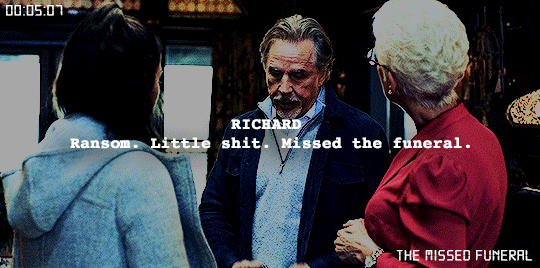









Examples of Chekhov’s gun in Knives Out (2019)
Chekhov’s gun (Russian: Чеховское ружьё) is a dramatic principle that states that every element in a story must be necessary, and irrelevant elements should be removed.
“If you say in the first chapter that there is a rifle hanging on the wall, in the second or third chapter it absolutely must go off. If it’s not going to be fired, it shouldn’t be hanging there.”
“One must never place a loaded rifle on the stage if it isn’t going to go off. It’s wrong to make promises you don’t mean to keep.“ - Chekhov, letter to Aleksandr Semenovich Lazarev, 1 November 1889.
12K notes
·
View notes
Text
CARRD MASTERLIST
here is a carrd for BLM
here is a carrd for the crisis happening right now in Yemen
here is a carrd for Hong Kong
here is a carrd for Palestine.
here is a carrd for trans rights
here is a carrd for the terror bill in Philippines.
here is a carrd with various donation links (for Syria, BLM etc)
here is a carrd for LGBT+ rights
this post is constantly being updated - please send an ask if you find more!
NOTE: There are many more Carrds under the cut. This post would become too long if I added more and for the sake of easier access, I put the rest under cut!!
Seguir leyendo
100K notes
·
View notes
Text
Dnd people! does anyone know how pirate ships work? or like....... where can i find like a tutorial for pirate ships? bc i have to npc a captain for one of em and i should know 🤦��♀️🤦🏽♀️🤦🏽♀️
1 note
·
View note
Text
Some people might yell at me for this, but...
Write DnD scenarios where the perfect little noble who wants you to kill some “bandits” turns out to be a cult leader who told you to kill innocent nomads so he could get a religious artifact.
Write DnD scenarios where the bugbear outside of town that the villagers want you to kill is actually getting children away from abusive parents.
Write DnD scenarios where orcs aren’t just brutish savages with no concept of morals or ethics.
Write DnD scenarios where goblins aren’t just kleptomaniac scavengers who prey on those weaker than them.
Write DnD scenarios where people in places of power/privilege are actually shitty sometimes and not always flawless or right.
Don’t always write scenarios where the people on the fringes of society or the people who are disadvantaged are automatically evil.
Write scenarios where people can actually rise above their circumstances and act decently, and scenarios where people who are advantaged can still fall apart and be bad people.
I don’t care if “not all people write like that”, or “it’s just part of the narrative”. I’m just tired of hearing people say that’s the way it should be done, or rather, “that’s the way it’s always been done”.
1K notes
·
View notes
Text
I made a thing...
Twice! I made two patterns.
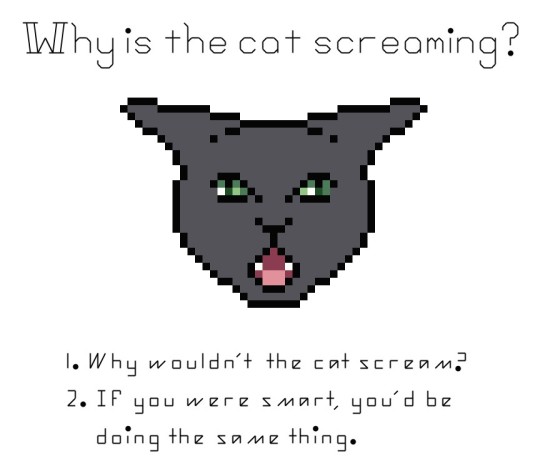
And…

I have another in the works.
38 notes
·
View notes
Text
Elves; Crypto-Anthropology Files
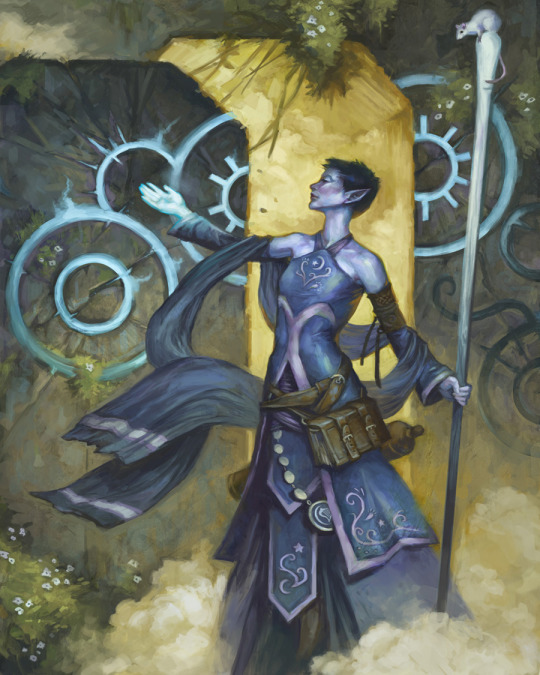
Elves are considered to be one of the oldest Races in the world, both considering their long lifespans and rich history. Though they may appear similar to Humans, Elves do have distinct characteristics which set them apart from the average Homosapien, most visibly their long, pointed ears. This feature gives the Elves incredibly advanced hearing, and they also have the unique gift of naturally efficient eyesight as well, though this does mean their eyes are also designed reflect light, much like a Cat’s eye would. The average Elf generally lives to be around 700 to 800 years old, though some have been known to live even longer, and they only reach full maturity around the age of 60. They are slightly taller than humans, generally around 6 to 7 feet tall, and are far more slender, but their greater muscle density makes them equally as strong as the average human male regardless. Males and Females are about the same height, with Men being only slightly bulkier than Women. And despite being stereotyped as Pale with Light Hair, Elves have a variety of skin tones and hair colors, just like humans. Elves are also largely incapable of growing facial or body hair as well.
Elves are also considered a race that you should not trifle with, as they are known to be quite efficient fighters. Their enhanced senses and slender build make them remarkably agile and graceful. Elves can also go weeks without sleep, and are also relatively immune to sleep magick, making an ambush a very improbable choice. Culturally, Elves typically use Bows, Swords and Daggers when fighting, and are also remarkably good at duel-wielding, given their agility and heightened senses.
(Art by @filibusterfrog!)

However, despite all of them sharing the pre-mentioned characteristics, there are 3 distinct types of Elves, all with their unique physical and cultural characteristics:
High Elves are the most common variety of Elf, and are generally what one typically thinks of when they hear the word. This variety typically makes their home among other Races or in grand kingdoms of their own. Their skin can range from snow-white pale to as golden as the sun, and they have a variety of hair colors as well, though lighter hair tends to be more common with this subspecies. High Elves are often stereotyped as stuck-up and arrogant, though they are also the most interconnected with the other Races, compared to the other varieties.
Wood Elves are the second most common variety, though they are relatively rare compared to High Elves, as they make their home in the depths of Ancient Forests and can be rather unwelcoming to outsiders. This subspecies makes their living by hunting and working off of the forest land, and are only really known to trade with High Elves, as they are incredibly wary of other Races. Their skin ranges from relatively pale to black, and they often have freckles as well. The most common hair colors among Wood Elves range from Brown to Black to Red hair. And though reluctant to interact with outsiders, Wood Elves are generally said to have a great lust for adventure and a deep love for nature.
Dark Elves, otherwise known as Drows, are the rarest variety of Elf. Generally making their home in caves or other dark places, Drows are stereotyped as the most evil of the subspecies, often thought to worship demons and pillage nearby towns and such, and thus they generally avoid other races in fear of persecution and mistreatment. Their skin is typically very dark, ranging from indigo to black, yet their hair is typically white, and their eyes range from a light yellow to a pale blue. And though they may be perceived as evil by other races, Drows have just as much internal variety as any other race.
Elves also have their own unique language, uncreatively called ‘Elvish’:

(Translation: “Tauriel is the best Elf, fight me.”)
2K notes
·
View notes
Photo

Religion is a massive part of your World Building. Like Religion in our own world, Religion in fictional worlds are controversial, varied and are a huge part of our society. Put simply; your world is dependent on the complexity of your Religion to indicate how your people act, what their morals are and basically how they live. Interconnectivity is a big part of World Building, and Religion is connected to everything in this case. So when crafting a religion, you have to take into account the territory you beliefs hold, the amount of time it has been around, the economy, political influences and geography of your land. From those small building blocks, you can craft a religion which is complex and something that could be unique to your world.
The Basics of Crafting a Religion
To start yourself off in building your Religion you need to ask yourself the following questions, and your Religion must answer them:
- Where do we go when we die?
- How was life created?
- What morals should your people live by?
These questions are the basics of crafting your Religion and by answering these provide your world with a basic feeling of spirituality that is important for civilizations. However, no all these questions have to be answered for you to form a religion. Maybe only one or two questions are answered. This gives your religion unique qualities and if you have many religions in your world a variety.
Variation on Religion
In order for your Religion to seem realistic in your world, you must provide a variation in beliefs and reasons behind such an occurrence. If your Religion is the most dominant one on a continent, you have to consider how it became that way. One way a particular belief becomes popular is through absorbing other smaller religions. They take their gods or moral rules and change them to fit their narrative. This would definitely create different beliefs and interpretations inside your Religion.
The way your Religion can also become popular is that it should have gain and loss element to it. How much does a worshiper gain from following that Religion and how much do they lose. By deciding that your then can determine how realistic the popularity our Religion would be.
There are other factors that must be considered when creating a religion which how much territory or land your Religion dominates or is in, the number of followers and the age of it. If your Religion has more territory, followers and is quite an old variation and different interpretation will be inevitable. However, if your Religion is young and has a small following, they would be more agreement.
Interconnectivity
Like every element of world building religion is connected and effects everything in your fictional world. The complexity and uniqueness of your fictional Religion depends on how much it links to the different aspects of your society. If your Religion is very intertwined in the society from the economy to culture, you will then make a world that feels realistic in its depth and complexity. The way to do this is to consider a few different aspects in your society and ask yourself how your Religion would affect this societal structure.
To show the culture your Religion promotes is to show how the beliefs would affect people in day to day life. How does your Religion change their weekly routine? What kind of relationship do they have with the gods? Is it a sibling or a parental-like relationship?
You will also have to ask yourself how it would affect the economy. If your Religion has a heavy influence on the military, the most popular job would be a soldier, a lot of money would put into that industry. Which leads nicely into the effects Religion has on politics. This depends on the type of Religion as there are different influences they would have. If your Religion is monotheistic, you would have more centralized power. With a more united front, your monotheistic Religion would have a lot of influences over politics often deciding your leaders. However, if your Religion is polytheistic, it would definitely would not have centralized power as you would different factions for each aspect of your Religion therefore not having a united front. This concept would cause less power of the political landscape.
Another aspect you would have to consider is the geography of your world. For example, if your civilization rely on a large river to survive you people would naturally worship the river and may even have a river god!
Extra Notes
Hey everyone! Hope this was helpful. Send me any suggestions for Friday!
3K notes
·
View notes
Text
D&D Material Plane Effects Theory
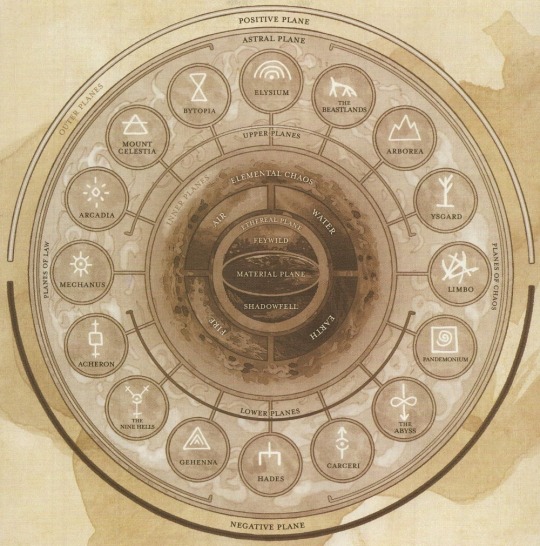
So I have this idea.
All the planes are listed having different influnces on the adventurers that travel there. Residents of that plan grew up there and that’s all they know, why would the world work any differently?
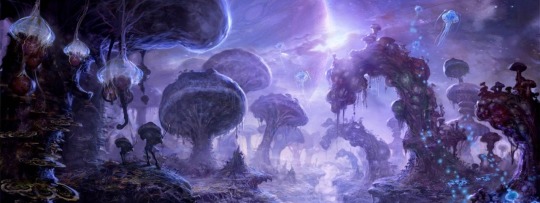
In the DMG (5.0) the different planes have effects for staying there overnight and how it changes your character. The material plane doesn’t! (Probably because it’s a mechanically neutral plane for the sake of gameplay BUT.)
What if the material plane did have an influence that affected creatures, but since the party grew up there they’re “noseblind” to it? What happens when a lesser demon is exposed to the material plane over an extended period of time?

It’s my theory that the material plane frees you from your planar influences and is a more “neutral” zone. Left there long enough, a demon begins to forget it’s compulsion for evil. They lose sight of what drove them to kill and murder. Maybe they even become more introspective as they ask what they want and how to find their own fulfillment.
You can tell your adventuring party hails from the material plane because they have a sense of direction, a sense of what they want as characters to achieve their own fulfillment, and they set out as adventurers to accomplish this.
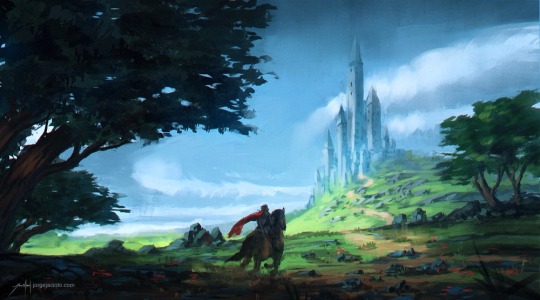
It’s my theory that extraplanar creatures are affected by the material plane when they stay for more than a day. They become subject to our flow of time and have inspired in themselves newfound agency to do things they want for fulfillment.
Thank you for coming to my TedTalk.
3K notes
·
View notes
Text
D&D Worldbuilding: Cities
Planning
There are a few ways to plan out a city for your D&D campaign and they can be as detailed or as specific as you need. Figure out what you need the city for.
Main Hub: If the entire campaign revolves around this city, it’s important to flesh it out with detail so you can answer PCs’ inevitable questions and let them do what they want to do. Create complex relationships between NPCs, factions, economy, religion, and politics for the PCs to unravel each time they return to the city.
Major Location: This won’t be the only city the PCs visit, but they will spend some time here. Flesh out the city with its various districts and some relevant plot hooks and NPCs. Flesh out the city by working from vague to specific as players spend more time there. You don’t want to develop the place too much if the players end up leaving for another location.
Just a Visit: If the PCs are only visiting the area, you only need to plan or map out the relevant parts of the city and create the NPCs they need to encounter or are likely to encounter (like shopkeepers when they go to restock supplies). Plan out a description of the city with a few key landmarks and interesting features that give the city character if they wish to revisit it later.
Passing Remark: The players will likely never reach this city unless they work toward it. Come up with an elevator pitch with a one-sentence description of the city so the campaign world feels larger and maybe you will even entice them to go. What is the city famous for? What is its most prominent landmark? What are its relationships to other cities (trade/politics)? Once you answer these you don’t need to go any further until the PCs say “We want to go there”
Once you know how detailed you need to be, there are two ways to plan a city (two that I use, anyway). I will either create a list of traits to inform how the city looks, or create a map and use it to inform what’s in the city. Often, these methods end up playing with each other and lead to map reworks or second drafts, and that’s okay. Trust me, your first idea is never your best!
Map Draft
Let’s start with making a map because it’s more freeform and easier to explain. The first thing you decide when making a map is what the focus will be. This will often be a power center (like a castle or tower) or an identifying landmark (like a mountain, lake, great tree, giant shard of crystal, anything really). Once you have that, work fast and loose to imagine how the city springs up from there. Create masses of buildings (not individual ones) and create districts. Give the map an interesting and asymmetrical silhouette or shape (unless you’re going for a symmetrical look to emphasize a city’s lawful alignment). As you get more detailed remember that everything should highlight the focal point for your city map. As far as specific areas to fill in, here is a handy list of things to keep in mind.
City Defenses: In a world with giant creatures and cloistered kingdoms, some cities opt for walls, gates, towers, siege weapons, or other such things.
Commerce Center: Where does the majority of trade take place in the city? Are there different areas for this?
Districts: Most cities tend to divide into districts, like residential, commercial, industrial, governmental, religious, or military districts. Try to come up with unique districts that let them differ from districts in other cities.
Entry Points: Where do people enter and leave the city? There is most likely more than one way to do so (for the safety of the city).
Landmarks: Besides the focal point, your city should 100% always have something the players will remember to help them visualize the city. There can be other smaller landmarks, perhaps one in each city district.
Lower Class: If you have a lower class district, they will have smaller, more densely-packed buildings. They may exist both inside and outside the city walls, but tends to spread further from the power center.
Power Center: Whoever leads the city is probably going to have a big building or walled district or point of interest to display their station.
Upper Class: If you have an upper class district, they will have larger buildings, more leisure space, more monuments, and possibly be walled off from the rest of the city. They are more likely to be closer to the power center.
Water source: Many cities needs access to water to keep their huge population alive, so don’t neglect this.
City Features/Traits
Cities have a variety of traits that make them unique from one another. Determine the nature of these traits to help flesh out your city. A flavorful city has positive traits and negative ones; strengths as well as flaws.
Power Center/Government: Who holds the power in your city? Look at various forms of government and don’t limit yourself to just monarchy. Cities can have a democracy, republic, military, theocracy, or perhaps an arcane form of leadership. You can get creative with fantasy elements or add complications to your government to make the city unique: perhaps a strange sentient crown controls the queen, or a ghost of a king maintains control of their monarchy beyond death. Perhaps the oligarchy is a sham and a secretive cult really bends the city to its whims.
Complications don’t always means evil plots, but they can make things difficult when trying to influence the city as a whole. The city’s government isn’t necessarily its center of power. If the city’s senate is in the thieves’ guild’s pocket, the PCs may have to parley with the guild instead of the senate.
Economy: Cities aren’t often self-sufficient. They specialize in certain resources and lack in others, which leads to imports and exports. A mining city might have a booming metals and stone industry, exporting raw ores and gems or even refined ones with jewelry, but might lack in wood or food and need to import it from a neighboring town. These help define the city’s relations to other cities nearby. The city’s economy can also differ within its own gates. Consider the disparity of wealth in your city between the rich and poor.
How does the city spend its wealth? An interesting city will prioritize one aspect over others, or neglect one aspect in favor of others. Here are some things a city can spend its wealth on:
Expansion: The city seeks physical growth by buildings structures to expand its borders or establishing colonies in distant lands. Cities that neglect expansion might not suffer as much but may be content with their position on a global scale.
Infrastructure/Transportation: The city focuses on being as efficient as possible with well-maintained systems and structures in place. A city that neglects infrastructure might find themselves at odds with merchants and nobles who frequent the use of roads and bureaucratic systems, while residents are forced to tolerate the city’s difficulties.
Residences: The city focuses on making its housing maintained and affordable and expanding. The city wants people living inside it rather than commuting to the city. A city that neglects this may have slums or shantytowns and may be over- or underpopulated.
Military/City Defense: The city seeks to defend itself by maintaining its walls and guard towers, ensuring regular and frequent patrols and lookouts. They likely have a standing army that is maintained in case of attack. Perhaps their relationships with other kingdoms are strained. A city that neglects this is either in peacetime or is vulnerable. The streets may be rampant with unchecked crime.
Education/Technology: The city seeks to improve its people and its efficiency. In the case of a fantasy city, this may involve magic and magic items, but could also simply be a city attempting to revolutionize and move beyond other cities with something that improves an existing system. A city that neglects this may have masses that are easier to manipulate and may be stuck in the past.
Food/Health: The city focuses on its people’s wellbeing by ensuring they can get enough food and water to live and enough health care (either through doctors or priests) to persist. A city that neglects this may have very unhappy and unhealthy people. The masses tend to revolt when their society betrays them of these core things.
Extravagance: The city focuses on its appearance or the arts. The city may have a lot of excess wealth to spend on this or might rely on pilgrims and tourists for its economy and presents a gorgeous face to draw them in. Cities often neglect this first unless they are doing well or the rich seek to pacify the poor without giving up their station. Cities that do neglect this are often utilitarian with only a few striking monuments or important structures.
Military: What serves as the city’s military? Try to pick a focus for the city that takes advantage of its position. A coastal city will have a powerful navy to defend its docks and trade routes. A mountainous city may have fantastic archers and catapults to take advantage of their height. A city surrounded by plains will have a good cavalry to make quick maneuvers. A city in a wooded region will have infantry to navigate the terrain better than cavalry, and take advantage of the plentiful cover against arrowfire.
How large is the military? One city might have a daunting and powerful military presence while another might only have a standing militia. It depends on how much conflict the city faces, within and without its walls.
How does the city use its military? Are they actively defending the city? Are they campaigning in foreign lands? Are they attacking another city? Is the military used to keep its rebelling population in line? Consider this, as it will prominently let players know what the city and its leadership will live and die for.
Religion(s): Cities might have multiple religions or just one. Choose which ones feature prominently in the city, if any, and how much city life revolves around those religions. I won’t go into the detail of every deity and religion in the D&D universe, but consider that each has its own specific dogma, style, and portfolio that will influence how its worshipers act. A city that worships a chaotic-evil deity will differ vastly from one that worships a lawful-good one. A city with many deities will be different than both.
Figure out where each religion’s center of power lies in your city, and how much influence they have.
Shops/Taverns: Although they often serve as minor details in the grand scheme of a city, shops and taverns should be interesting and memorable for the players’ experience. Shop owners and innkeepers are an important reflection of the city, demonstrating how the populace views the city in which it lives. Moreover, filling a shop with items to buy and a tavern with quest hooks gives the players easy places to restock and find information when visiting the city. Put interesting characters in there to help characterize the city.
Landmarks: Landmarks define the setting and location and can even serve metaphorical or narrative meaning for the city. They help players visualize the city in their mind and remember it. Landmarks can be manmade or naturally-occurring, as long as it gives players groundwork to know where they are. The bigger and more unusual it is, the more interesting and memorable your city will be. Is there a giant shard of permanently-frozen ice from an ancient white dragon’s attack eons-ago looming as a grim reminder over the city? People tend to remember that sort of thing. Every city should be interesting, but just keep in mind not every city needs to have the same level of intrigue. If you have a main city the plot centers around, then go ham and go weird.
City Story: Cities can have stories just like any character, and when you start treating them like a character, it can have amazing results. Cities have backstories, conflicts, allies, and are filled with unique individuals who all contribute to the city’s traits.
History of the City: Cities aren’t built in a day. What happened to the city in the past to bring it where it is today? Disasters and war are useful historical tools that can be built around. The city recovers from such things but might never be the same. I have a city where a dragon’s attack caused a landslide that revealed an entry to the Underdark, and an entire city district built itself around it years later. History also adds layers to your campaign setting and makes it feel bigger and more unfathomable.
Factions: Cities draw people together, and people tend to group into communities. Those communities often have different goals that can come at odds with one another. This is where factions come in. Decide which factions are the most prominent in your city, establish their goals and ideals, and perhaps find a way to identify them. Figure out how they relate with other factions and what actions they have taken or plan to take to achieve their goals. Players love joining factions and it can give them an important stepping stone into the story of your world. Factions can include guilds, religious organizations, noble families, consortiums, or many such things.
Districts: Separating the city into more digestible portions can help players get to know it better and diversify it by forcing you to come up with unique areas of the city. Of course, don’t limit your city to such divisions. A commercial district can have a residential building, and an upper-class area can have an abandoned building housing squatters. The districts can even just be divisions in name only, much like street names. They may even be more memorable if they bear a unique name rather than simply “Merchant Ward” or “Warehouse District.”
What’s more interesting is creating something visually or culturally different for each district. Perhaps a district of a city named Towerhamme was built by giants from ages past and the colossal buildings have been subdivided by the humans now living there. Another district might consist of predominantly Thri-Kreen who worship Bralm (the goddess of insects and industry) and all speak a different dialect that mixes Thri-Kreen and Common. A district might lie in the dark underneath another district, with pillars as thick as trees holding up the buildings and streets above it, and come to be called the Night-Stone Forest. Not every district needs to be a didactic description of what’s in it.
NPCs: You don’t need to list everyone in the city, but make sure you know who the important people are. Name the people who are in power; those leading the government, religions, and factions. Name those important to your storyline. Think up interesting NPCs for the taverns and shops in your city. And most importantly, keep a list of random names handy so you can come up with them on the spot when PCs talk to people you didn’t prepare for. It may even be helpful to come up with interesting characters complete with backstories that the PCs can meet as allies or enemies. Just be careful with this, because you don’t know which NPCs your characters will become invested in until they do. The random throwaway character might be their favorite person to talk to while the most unique character that you delved into the deep history of was too boring for them. Make characters like crazy, but make backstories when you have to.
Foreign Relations: In terms of a city as a character, these are your city’s “bonds.” How does the city deal with other places? Economics and trading can be a large influence on how a city feels about another city or territory. If they rely a lot on each other they will tend to help each other out. If not, they might be indifferent or even enemies. Members of cities might feel differently than the city as a whole, but the city’s leadership most definitely will take some sort of diplomatic stance against other cities or territories.
A city’s diplomacy can be important to a storyline and add to the tone for the campaign. If two cities dislike each other, players will feel the tension if they travel between them. Friendly cities will be a different experience that carries less tension and more of an exploratory tone as the PCs wonder what awaits them.
City relations can also create opportunities for players to get involved, letting them ignite wars or resolve them can be important if that’s what the PCs want from the campaign.
4K notes
·
View notes
Text
If I was going to put the Horrible Goose in a D&D game, I wouldn’t make it some big high-CR threat – it’d just be a regular goose that’s capable of regular goose stuff, with three significant exceptions:
1. It can show up anywhere, even if there’s no reasonable way for it to have gotten there.
2. It seems to have limited ontological inertia. If the players imprison it, it vanishes from its prison when they’re not looking. If they kill it, another goose shows up eventually. It’d be impossible to prove that it’s always the same goose, save for the third notable trait…
3. …namely, that it doesn’t show up in divinations. Like, at all. Predictions don’t take it into account. Scrying on its location reveals an empty room. Spells that would detect it or read its mind act like there’s no valid target present. If the cleric communes with their god and asks about it, their god has no idea what the cleric is talking about. It might take some doing to arrange for the players to become aware of this property, so don’t force it – the opportunity will arise!
There we go. No goofy boss monster tricks, yet it’s guaranteed to drive your players nuts – not even by harassing them, necessarily, but just by existing as they try to figure out what it means, particularly once they learn of the third trait discussed above.
57K notes
·
View notes
Text
Fantasy Wardrobe: Popular Gowns of History
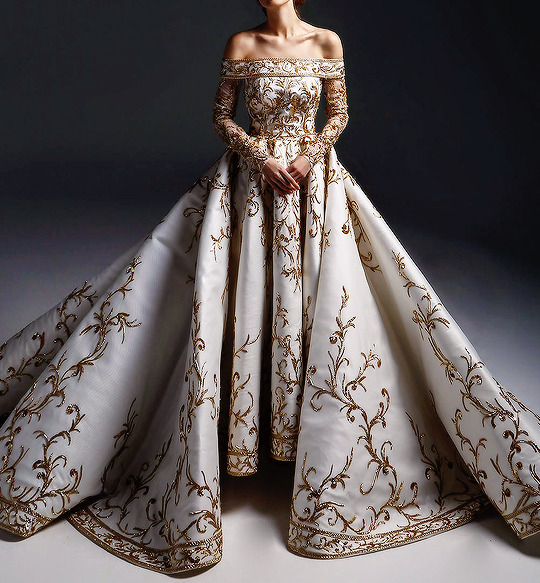
Fashion is one of my favourite worldbuilding components and choosing which way I want characters to look, is one part of research that is more fun than work. The use of different styles give each culture a defined feel and could act as a symbol of all kinds of lands in your WIP. Since it is your WIP, you can play with different elements of the gowns and pay fast and loose with the styles.
(If you want a more in-depth look at the structure of gowns and the composition of gowns have a look here)
Kirtle
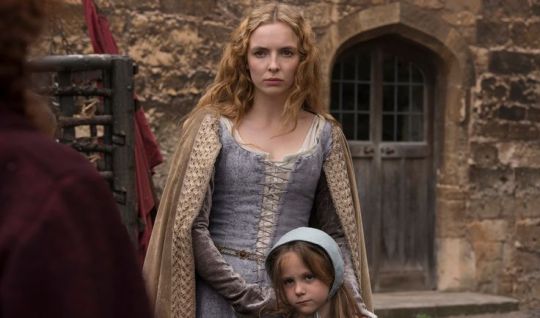
The kirtle was technically an under dress to be worn under a grander gown though some women wore it as a gown itself over their chemise. The kirtle could be made of any material and worn by any woman of any rank. It could be laced at the back, front and even, though rarely, the side.
Sarafan
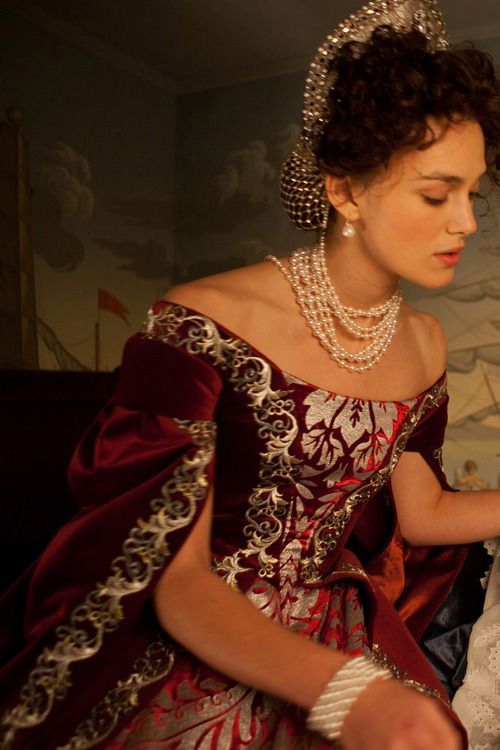
The sarafan is a traditional Russian dress worn mainly by the peasants (since Peter the Great banned traditional Russian costumes from the nobility in order to drag them toward Westernization). It rather resembles a pinafore and often worm under a lighter gown like a slip. During the reign of Nicholas I, the sarafan was allowed to be worn by the women of the Royal court. They fancied up the sarafan, adding a popular boat-line neckline and long dragging sleeves. It is one of my favourite looks of all time.
Gamurra
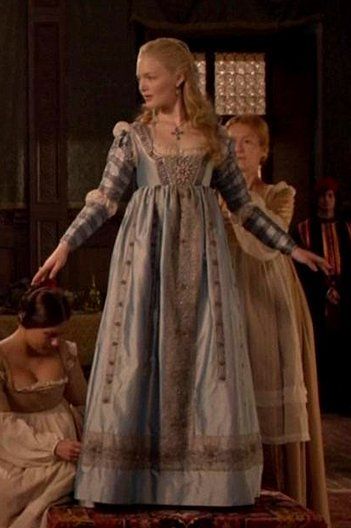
This was the most popular gown in Renaissance Italy. The waist was high, usually pleated beneath the bust and had a square neckline. The gown would be worn over the lady's chemise and corset and perhaps another under dress. It was worn by both nobles and commoners.
Burgundian Gowns/Houppelande
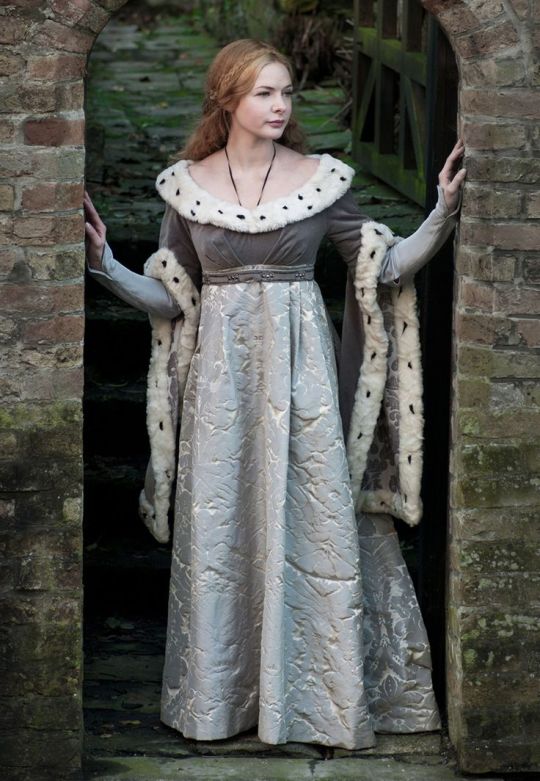
These gowns were high-waisted, belted underneath the bust. The neckline was classically shaped in a V, often showing off another fabric underneath. These gowns were worn by highborn women.
The Farthingale
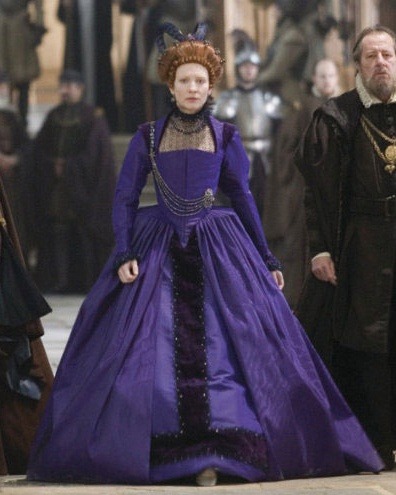
This gown is named after the structure that held it in place. The skirts would be stretched into a dome-like, bell-jar shape, often fitted about the waist over a bum-roll (stop sniggering) a piece of padded fabric hung about the waist to widen the skirt's distance from the bodice. You know what they say, the bigger the Farthingale the bigger the rank. Worn through the 15th & 16th centuries.
Robe à l'Anglaise
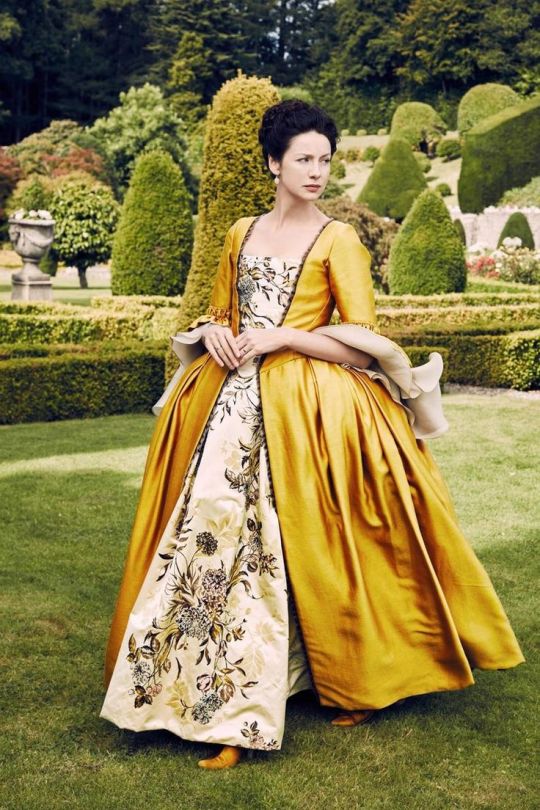
This gown is the classic silhouette of the 18th century. The sleeves usually stopped at the elbow. The neckline was usually cut square. The bodice could be done up in front by laces or buttons. The skirts usually were supported by panniers and often reached staggering girth.
Robe à la Française

This French gown was similar to the Robe à l'Anglaise only that the back featured a train made from pleated fabric that draped from the shoulders to the floor. The gown often opened at the front to show another material beneath.
Robe à la Polonaise

The Robe à la Polonaise was similar to the last two gowns excepting a skirt that featured an overskirt which was picked up and pleated to show the under skirt.
Chiton
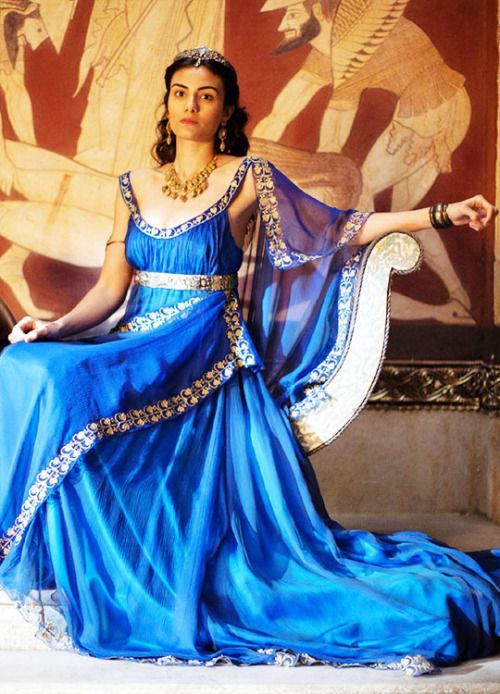
This dress is often seen in Roman or Greek art. The Doric version was made by draping material over the body and fastened at the shoulder by clasps The Ionic chiton version was draped about the body and pinned at the waist.
10K notes
·
View notes
Text
how to make a story file
As I am preparing for Camp NaNo*, I have been working on my story file. It occurred to me this might not be common or popular practice. “Story File” is a name I gave it and maybe some of y’all have a different name with the same contents.
*There’s still time to apply to join my Camp NaNo cabin!
My Story File contains everything about my story that doesn’t go in the outline.
It’s broken up into major categories and specific templates. So without further ado, here is how I structure my Story File.
Intro
Title
Logline
Synopsis
Genre
Estimated Total Length (word count)
Draft Length Goal (word count)
Character Bank
Main characters and brief, one-sentence descriptions with ages
Themes and Character Development
Central Question
The Yes/No question that is being asked through the whole story
Should have objective qualities, rather than subjective
i.e. “Will they fall in love?” (subjective) vs. “Will they leave their partners and become a couple?” (objective)
Thematic Questions
These are the internal conflict questions that reside in your character(s) and your story
ex. “Can there really be a successful government?”
ex. “Does grief excuse bad actions?”
Themes at a Glance
Words or phrases that relate to the themes of the story
ex. person vs. nature
ex. isolation
ex. grief
ex. first love
Motivation / Stasis State / Final State
for each main character, you should write a sentence or two pertaining to these three things
Motivation: What is the drive behind this character and their past, present, and future actions? What part of their background makes them the way that they are? What are they looking for? What do they want out of this/a situation?
Stasis State: What are they like before the inciting incident? What problems and questions do they have?
Final State: What has changed about them and their outlook? What questions have they resolved? What has happened to their internal conflict?
Relationships
I usually make a little web of the MCs and their relationship to one another. One for the stasis and one for final.
Stasis: How do these characters see each other? How do they act toward the other? (All before the inciting incident)
Final: How do these characters see each other now? How has their idea of one another shifted?
Even if a character dies before the end, include the most recent relationship status in the Final web.
ex. this is how I organize it, using the Draw feature of Google Docs

Character Bank
This is just a very preliminary character bank. If you prefer a more in-depth one, check out my 6 Box Method.
Per (relevant/important) character:
Name
Nickname/preferred name
Age
Field/Occupation
Physical Description
Personality
Personal History
Education/Occupation History
Extra Notes:
Worldbuilding Bank
(Check out my worldbuilding posts on Categories Pt. 1 and 2 for better context)
Seasons and Climate
Languages
Other Cultural Pockets
Folklore and Legends
Fine Arts
Dress and Modesty
Classes
Jobs
Currency and Economics
Shopping
Agriculture and Livestock
Imports and Exports
Literature, Pop Culture, and Entertainment
Food and Water
Holidays and Festivals
Family and Parenting
Relationships
Housing
Religion and Beliefs
Government
Health and Medicine
Technology and Communication
Death
Transportation
Plants, Animals, and Human-environment Interaction
Education
Beauty Standards
Gender and Sexuality
—————————
I hope this helps y’all and supplements what you’re probably already doing. I know it’s helped me tons to have everything in a central place.
Best of luck!
6K notes
·
View notes
Text
hey, fantasy and historical writers!! Just a quick thing but uh, you know your blacksmiths? yeah? okay, so,they don’t just make weapons. Like, the general village blacksmith was a person who made kitchen utensils, latches for gates, pots, cauldrons, candle holders — lots of stuff!
Your blacksmith can make some awesome swords, yeah, but swords were generally useful for like, people with armouries, travellers, knights, etc. And swords weren’t the most important thing that blacksmiths made! Door hinges, horseshoes, spurs, sickles, axels for horse-drawn carts, iron bands for wheels, kettles, hooks to hang stuff on… that’s where most of their work would come from. It was vital! Blacksmiths, along with many other crafting professions, literally made the stuff that held society together, right down to the tiny steel loop fastenings on a shirt.
Just remember that next time you’re doing worldbuilding for your story.
10K notes
·
View notes
Text
worldbuilding: problems
there’s no place where everything runs smoothly. every country has it’s problems. that might be poverty, weak government, fake news, gun violence, or abuse of magical abilities. it could really be anything. so what’s wrong with your world?
what could go wrong:
poverty
corrupt government (a few infiltrations? biased officials? a dictator?)
discrimination/persecution of any kind (sexism, racism, religion, anything that makes someone unique)
violence (gangs, guns, magic, sexual assault)
failing economy
counterfeits (money, expensive products, anything)
drugs (fake drugs, very real and dangerous drugs)
weak government (ie. the government isn’t necessarily corrupt, but no one listens to them and they have no real power at all so everyone just runs amok)
environmental crisis
relations with other countries/regions
war
fake news (can be something smaller like what goes around on the internet today, or something as horrible as the propaganda the axis powers fed their people about the allied powers)
scarcity
terrorist groups
stereotypes (remember, even seemingly positive stereotypes can be damaging)
manipulation/using people
there’s a whole lot more, get creative! as saddening as this will be, scrolling through news articles will give you some good inspiration because our world is pretty messed up
how to choose which problems to include
what is your world like? as obvious as this probably sounds, your world’s problems are directly related to the things in your world. choose pretty much any element of your world, however small it may seem, and there can be made a problem out of it.
in a world of magic:
magic can be abused
magic can be faked (ie. in harry potter, around exam season, students sell items that “enhance your brain” or whatever when it’s really pixie poop, i’m not even kidding)
discrimination between magical and non magical people (muggleborns vs. purebloods)
people rely too much on magic and become weak (a great example of this is the Renegades series, where the non prodigies depend on the prodigies way too much)
non magic people using magical people (or magical people using other magicals, ex. grindelwald/percival graves using creedence to find the obscurial)
really, the problems for a magical world are endless - you can use regular real-life problems with a twist. the magical government lies to the public, buying out the main news source? people of pure magical lineage are somehow better than those related to non magical people? harry potter is a fantastic example of magical worldbuilding, steal stuff from jkr (but don’t make gay characters who are never actually gay)
in a world of science:
i’m a big fantasy nerd, much less sci-fi, so i don’t really have any good examples from books/movies, but here are some ideas anyway
the people who live on a different planet are starting to run out of resources and take over the earth (literally the plot of the Lunar Chronicles series)
the government is testing out new sciencey techy stuff and they accidentally make superhuman demon things (Incredibles, but they’re nice guys, not demon things, except maybe jack jack but he’s a cutie don’t hurt him)
terrorist groups steal a smart guy to make weapons for them (Iron Man)
the world is dying
two + planets are fighting over something
technology/inventions/whatever can be abused
wow these are terrible i’m sorry i need to read more sci-fi
again, you can take regular real world problems and put a sciencey twist on them; a gang that kills people with laserbeam contact lenses, a new invention that uses a very rare element that’s important to the ecosystem and is starting to destroy the planet, the little robots we send to mars become self aware and build a colony of robots. go off sis
10K notes
·
View notes
Text
Fantasy Wardrobe: Popular Men's Fashion of History
Fashion is one of my favourite worldbuilding components and choosing which way I want characters to look, is one part of research that is more fun than work. The use of different styles give each culture a defined feel and could act as a symbol of all kinds of lands in your WIP. Since it is your WIP, you can play with different elements of the garments and pay fast and loose with the styles.
Shirt

The shirt is the key to every other item of clothing on this list. The shirt was always worn under everything. It was often made of linen and worn by all classes. The shirt was often embroidered with blackwork and was sometimes even able to peak out from slashings in the garment over it. Shirts were seen as an intimate item of clothing. You should hear about the chaos that occurred when Anne Boleyn found out that Katherine of Aragon was still sewing Henry VIII's shirts.
Tunic

The tunic was worn by all classes. The tunic could be sleeveless or with sleeves. Tunics usually reached the knee or mid thigh when worn in hot climates and could be cut to the hip like a regular shirt today. They were belted at the waist.
Doublet

The doublet was a jacket worn over a man's undershirt. The doublet was usually laced or buttoned up at the front, reaching from the neck of the wearer to the hip of the waist. The doublet was often padded in order to keep the wearer warm.
Jerkin

The jerkin is a tight fitted jacket worn again over the shirt that is buttoned or laced at the front. The jerkin could be worn with or without sleeves. Leather was a popular material for these to be made and was worn by both classes.
Breeches

Are pants. Most breeches stopped at the knee though some reached the ankle, similar to today's trousers. Breeches could be in laced at the front and were worn by every class of men.
Hose

These were a style of pants that usually ended above the knee. Hose were often worn with a codpiece, a rather bold fashion statement for men. Hose would have also been worn with stockings held up by garters. Hose might be padded at the things to add some flare to the look.
Overgown

The overgown is rather like a great loose jacket worn over the doublet or jerkin. It was usually sewn with fur for warmth and made of contrasting fabric than what lay underneath.
Justacorps

This is the classic knee-length coat worn by men 18th century. Men would wear this over a waistcoat and shirt. This was a popular fashion for highborn men. It does still look fine.
Kaftan/ Caftan/Boubou

This is a large robe that is pulled on over the head with long sleeves. It can have a v-neck or round neck. They are usually heavily embroidered.
Achkan/Sherwani

This is the long coat worn by Indian men. It is usually buttoned up at the front, reaches just below the knees and is long sleeved.
18K notes
·
View notes